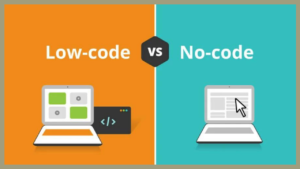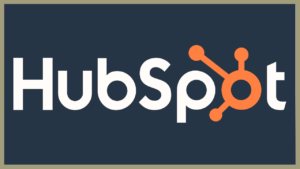Market validation was one of my biggest struggles as an early-stage startup founder back in 2015.
With little knowledge of the topic or process and no team to brainstorm ideas with – I often found myself learning by trial and error. From hundreds of customer interviews to sending e-blast surveys and creating/testing prototypes – I threw myself into the world of market validation without much guidance or direction at all.
In this post, I want to help early-stage founders and business owners understand the importance of thoughtful and thorough market validation research and how, if done correctly, it can help founders avoid costly and time-consuming mistakes while building a product, company, or brand.
Table of Contents
1. Identifying the Target Market:
All businesses seek to serve a specific and ideal group of customers referred to as a target market.
While this might seem obvious, this simple fact often gets overlooked by enthusiastic founders who want to believe that everyone is their target market which is certainly never the case. In fact, it is equally important to distinguish who are not your customers as to identify those who likely are or will become customers.
Making this firm distinction will help you prioritize your time, energy, efforts, and budget as a business owner – often with very few resources to spare.
When thinking about an ideal target market for a business, service, or product, there are often a few factors that can help narrow the focus of potential markets such as:
- Demographics
- Characteristics of people such as age, sex, income level, race, employment, location, homeownership, and level of education
- Geographics
- Specific characteristics of a potential customer’s location such as city, state, zip code, country, culture, population density, language, time zone, climate, etc.
- Psychographics
- Psychological traits of people such as interests, activities, opinions, values, desires, goals, interests, and lifestyle choices.
- Behaviors
- UX
- In-page clicks & mouse movement
- Scroll depth
- User navigation patterns
- Site speed
- Content Performance
- Popularity (views, page visits, etc)
- Engagement (likes, comments, shares, etc)
- Bounces & Exits
- UX
- Firmographics
- Characteristics of a company such as industry type, company size, company reach, annual expenditure and revenue, ownership style, market trends, and growth information.
2. Identify the Problem You Solve
Understanding your potential customer’s pain points, needs, and preferences, will help you tailor your product or offerings to exceed their expectations, and being crystal clear about what problem you are trying to solve will be incredibly important for the trajectory of your business.
After establishing an initial target market, it’s time to speak openly and honestly with them about what their true problems are, how they solve them today, and if your proposed idea would be a viable solution in their eyes.
While there are countless ways to validate a problem and solution with your target audience, the following are a few common ways that can help you gather early data regarding how your proposed audience feels about your business or idea:
- User interviews
- User interviews can be conducted virtually, in person, or even via phone or email. This method allows potential customers to provide open and honest feedback regarding their current frustrations and future aspirations related to the proposed problem. Carefully curated questions will help you uncover the true wants and needs of your potential customers and even spark new ideas to improve your solution. Be sure to document your questions and answers from each interview for review at a later time.
- Polls/Surveys
- Polls and surveys can also be conducted in person or virtually with the use of apps like SurveyMonkey and others. A simple poll or survey sent to a group of potential target customers can be a simple way to quantify some of your early assumptions and begin gathering data points to help make decisions to improve the product, service, or business model as a whole.
- Focus groups
- Focus groups are another great validation strategy that can be performed in person or virtually. This approach is similar to the User Interview method but in a group setting rather than one-on-one. A series of focused questions can be asked to the group to study various opinions, concerns, and perspectives from various groups of potential customers at once. When using this strategy, it is best to ensure that a balanced mixture of potential target customers are part of the focus group to avoid redundant feedback and welcome differing opinions that may help refine the business or idea.
- Feedback sessions
- Similar to focus groups, feedback sessions can also provide valuable insight from various segments of potential customers either in person or virtually. In a feedback session, participants will typically have a chance to preview a product/service or be presented with a demonstration. Following their experience with the product, service, or demo, the feedback group will provide to the host who will document, quantify, and synthesize the feedback at a later time.
- Email
- Email is a common but effective way to get verbatim feedback on a product, service, or business problem from users within your target market. I would highly recommend reserving this approach for warm-market connections (individuals that you know and have a personal relationship with) rather than cold-market (individuals you do not have a personal relationship with) to reduce the odds of your email being sent to the recipient’s spam folder and increase the likelihood of the email being opened and read.
3. Develop User/Customer Personas
Within a target market, it’s helpful to focus on highly specific groups of potential customers – often referred to as user or customer personas.These personas will essentially serve as profiles of your ideal customer or user groups that will benefit from the use of your product or service.
Defining these groups will become important when thinking about how to continually iterate and improve on your initial offerings and how your brand will reach and engage these groups of people.
To begin defining persona groups, review any existing lead information that may have been collected during your target market research. Information provided in surveys, user interviews, polls, or focus groups, are all great places to begin searching for commonalities between individuals within your target market. The important thing to identify with each persona group are the underlying motivations behind specific behaviors, actions, or desired outcomes.
Here are just a few examples of what a persona could look like, but in no way is this the only way to define your persona(s):
Restaurant Managers
- Name: John Doe
- Age: 32
- Location: Boston, MA
- Industry: Food & Service
- Job Role: Restaurant Manager
- Income: $52,000-$90,000
- Motivation: Increase order volume, improve restaurant efficiency
- Habits: Uses Google Sheets for all logistics, data entry, and accounting
Service Industry Workers
- Name: Joe Doe
- Age: 22
- Location: Cincinnati, OH
- Industry: Food & Service
- Job Role: Kitchen Cook
- Income: $22,000-$55,000
- Motivation: Improve kitchen order processing and quality control
- Habits: Manually reads each ticket from pieces of paper
Service Industry Customers
- Name: Jane Doe
- Age: 29
- Location: Rochester, NY
- Industry: Banking
- Job Role: Account Executive
- Income: $80,000-$320,000
- Motivation: Wants faster dine-in experience with less wait times
- Habits: Tends to make reservations for lunch online twice per week
Once you have defined these persona groups, you can more clearly connect with them through your brand archetype and marketing efforts while ensuring that you are continually building toward the future with the right end customers in mind.
4. Quantify the Problem & Opportunity:
Quantifying the size of the problem and potential market opportunity are important factors for early founders of new businesses. If you have already identified a potential target market, then it should be relatively straightforward to do some online research around exactly how big your market potentially is.
In our example personas above, we are focused on serving the Food & Services industry which we could quantify, for example, as representing a $2.3 Trillion industry in the U.S. in 2022 with over 115 Million Americans dining out casually once per week. We could do further research to discover, for example, that 60% of restaurants in the U.S. expect online food ordering sales to increase from 2022 to 2023.
Quantifying the size of the problem you are trying to solve and the market opportunity that you hope to capture are key factors in understanding the feasibility of your business and whether or not it will be worth the time, energy, money, effort, and resources needed to continue pursuing it long-term.
5. Perform Competitive Analysis:
Understanding potential competitors within your industry will be essential in offering a superior product or service to your ideal customers. In fact, while many founders believe that competition within a market is a bad thing, it’s often viewed as a positive signal that others are profiting within your niche and potential customers are also willing to pay.
A competitive analysis can be as simple or complex as you need it to be. The most important part is that it tracks the appropriate competitors and key factors that can help you compete and strategize effectively.
Below is an example of a simple competitive analysis that I use with Google Sheets to help me quickly identify direct and indirect competitors within a market for myself or clients:
The following example using Google Slides to highlight key feature differentiation between various competitors within a space:
The key in this step is to ensure that you are analyzing the most comparable companies based on the most appropriate factors for your business such as:
- Feature, service, or product offerings
- Target market
- Current or projected market shares (sales/revenue)
- Pricing/business model comparison
- Marketing or social media strategy
- Ratings and reviews
6. Create and Test a Minimum Viable Product (MVP):
Developing a simplified version of your product or service and launching it to a select group of early adopters is one of the best ways to help gauge interest, collect feedback, analyze user behavior, and iterate based on the insights gathered.
Creating a Minimum Viable Product (MVP) allows you to test and validate your business idea in the market with your target audience(s) while minimizing the costs, time, and risks associated with a full product or business launch.
The best outcome of launching an MVP of your product or service is a paying customer. The ability to build and offer enough value to your target audience that they are willing to pay is the highest form of business idea validation and while not a surefire sign that the business will be a success, it is certainly an arrow pointing you in the right direction.
What’s next?
This post is meant to be a simplified overview of the key steps needed to validate any product or business idea in 2023, but in no way is this an all-encompassing guide to market validation. To explore these topics further, I recommend checking out books like “The Lean Startup” by Eric Ries and “Running Lean” by Ash Maurya as they provide foundational knowledge and valuable insights into market validation and offer practical guidance for founders early in their entrepreneurial journey.




